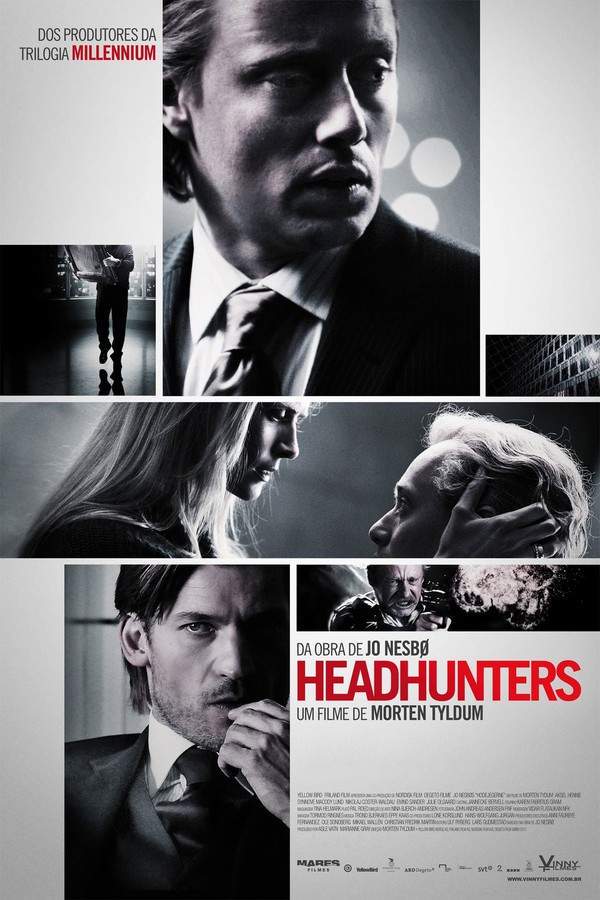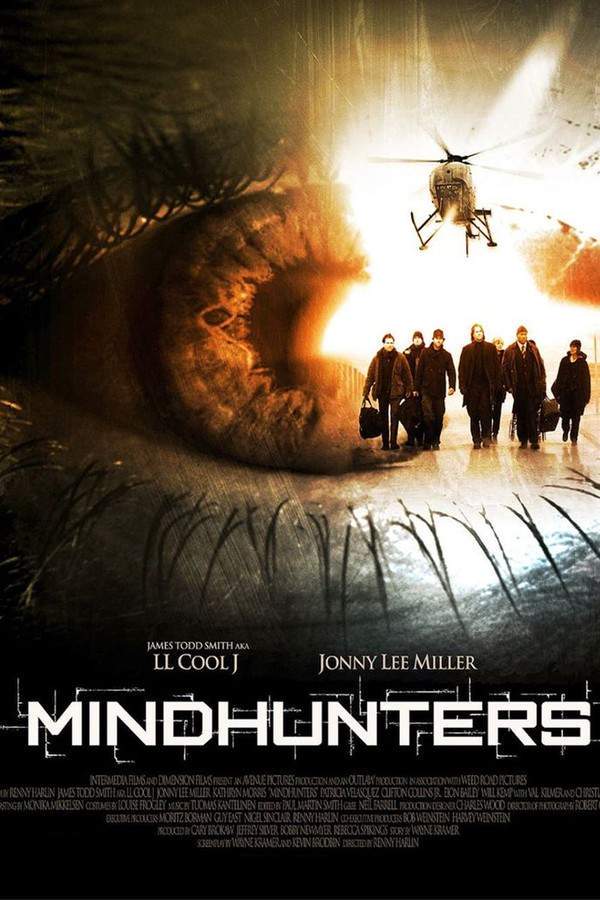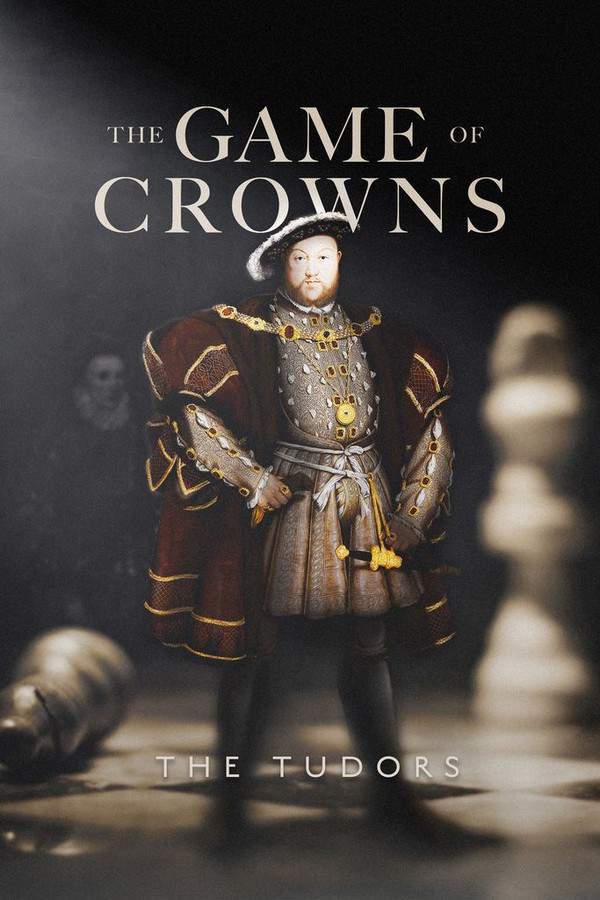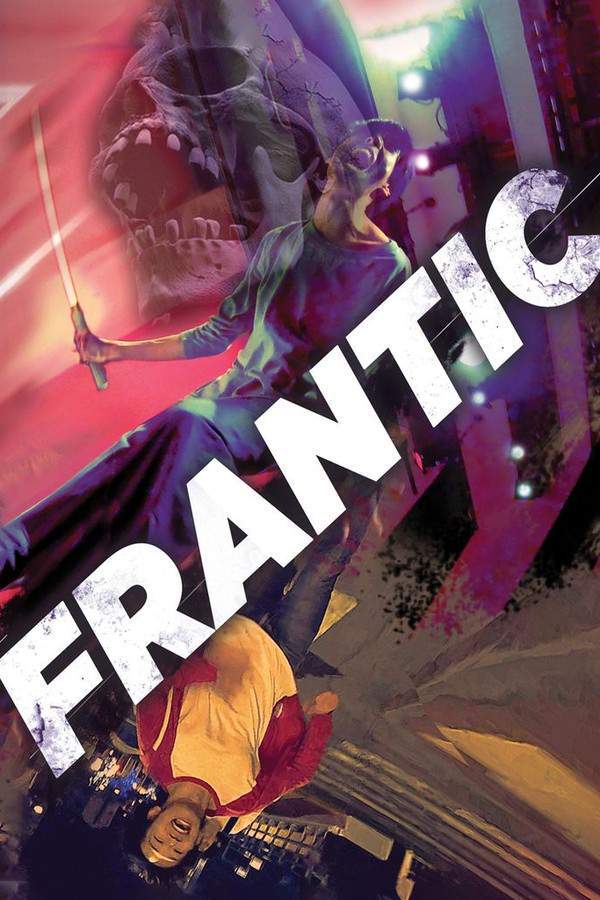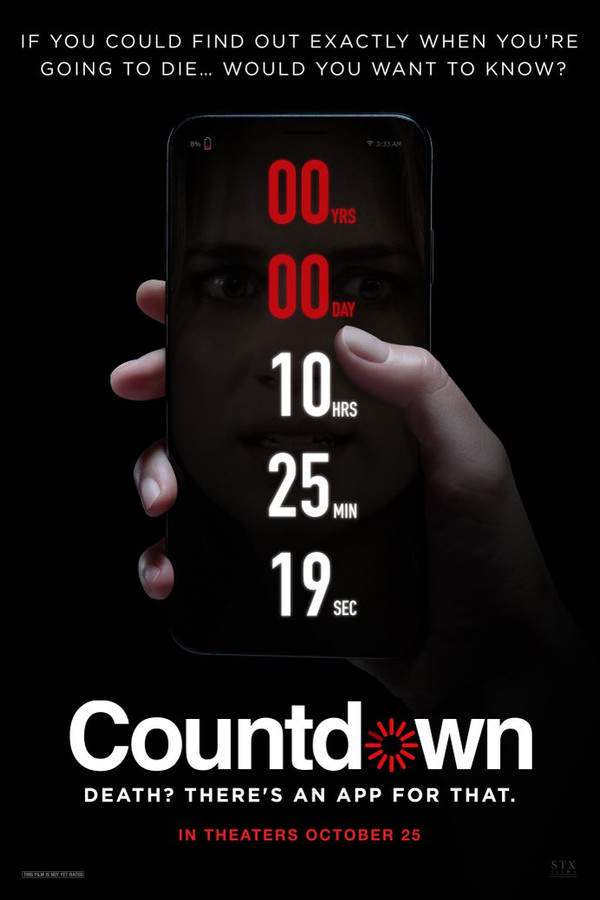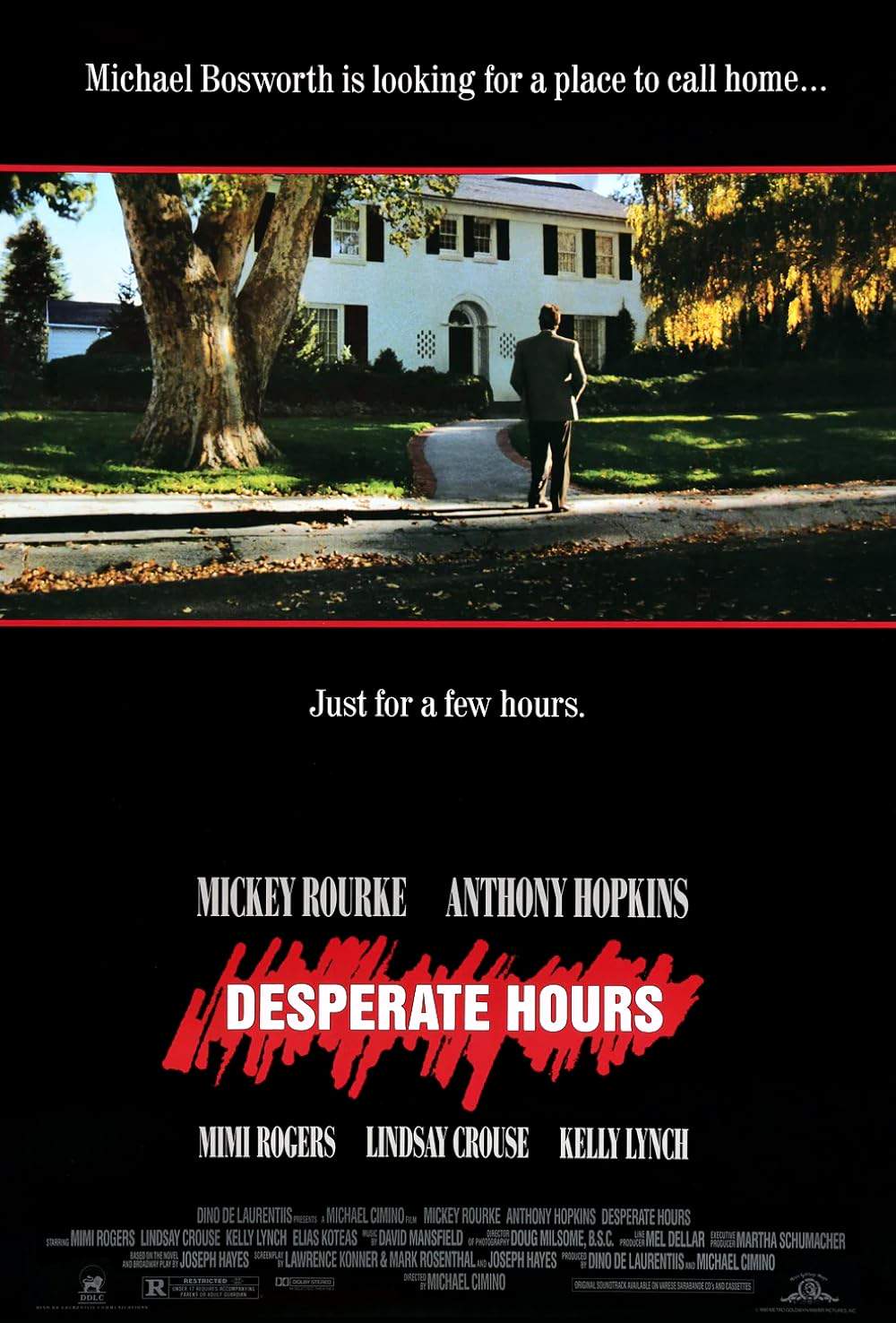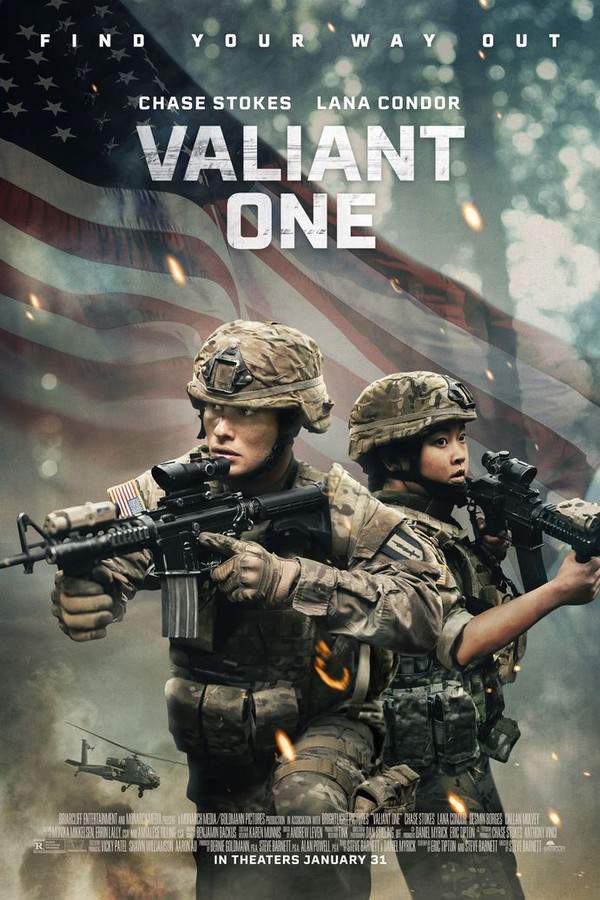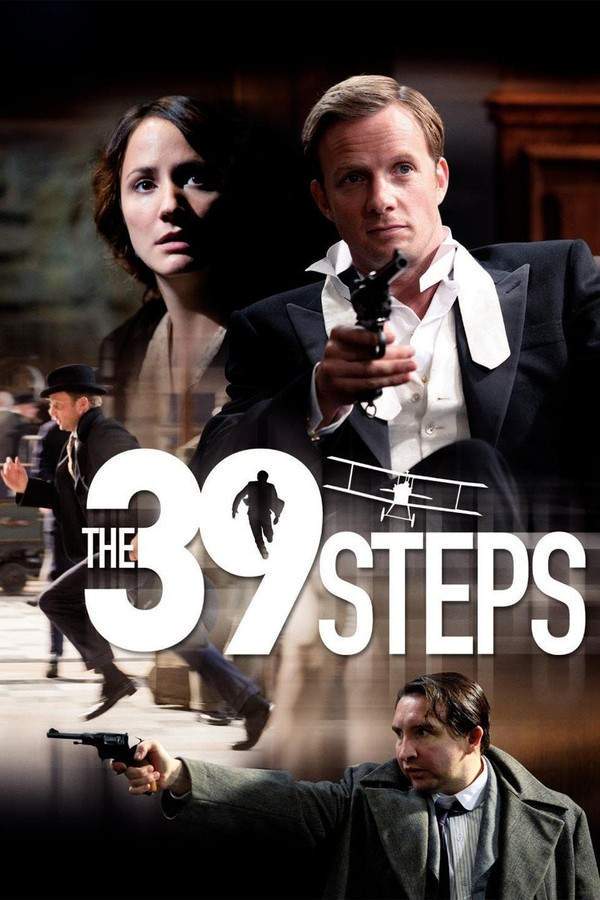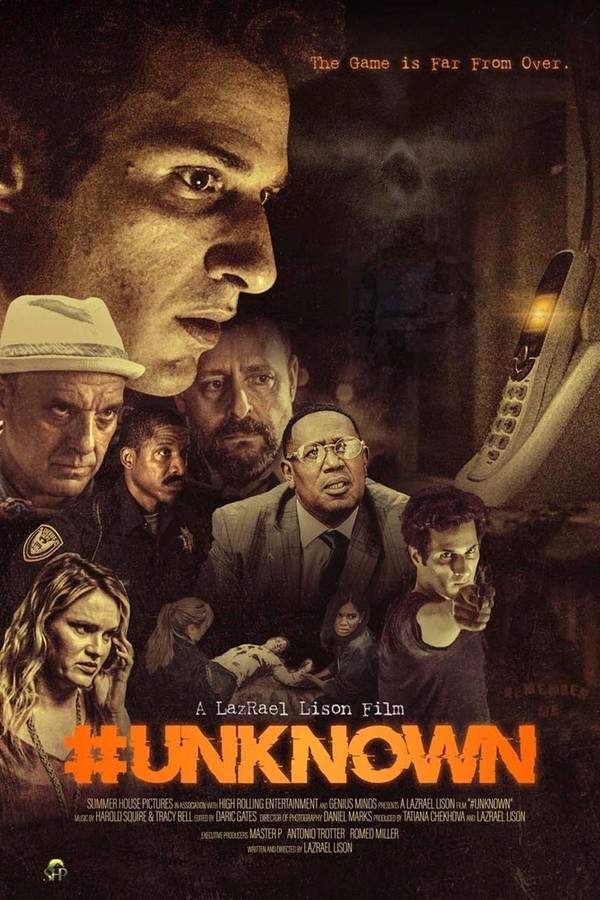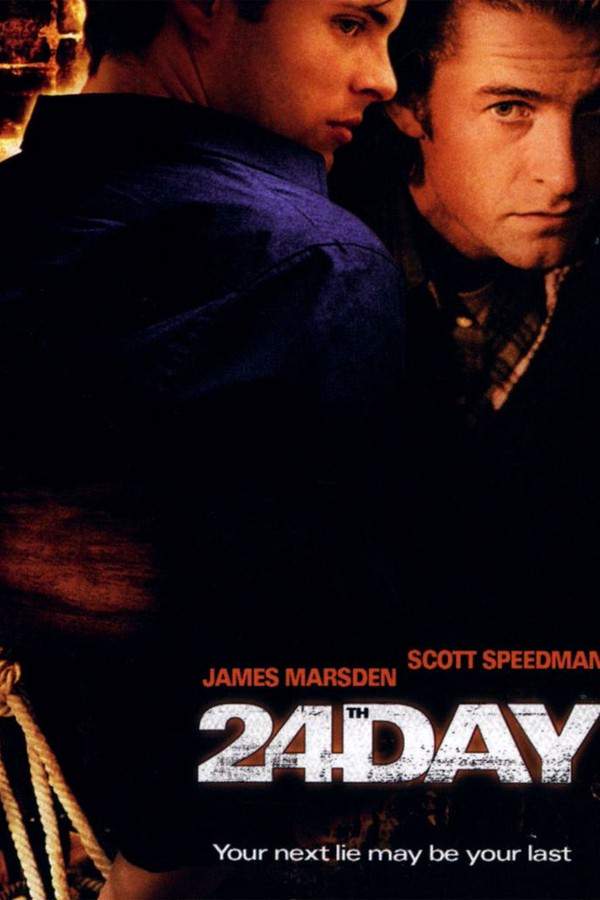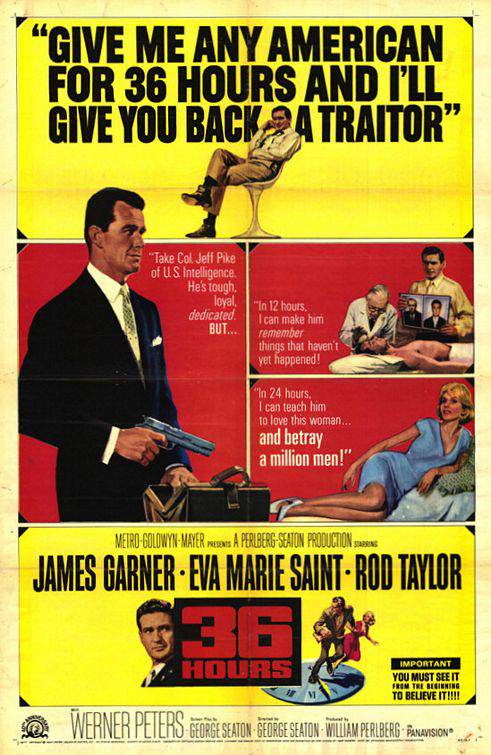
36 Hours
Year: 1965
Runtime: 115 min
Language: English
Director: George Seaton
A man finds himself caught in a deadly game, pursued by a relentless syndicate with only 36 hours to survive. He must use all his wits and skills to evade capture and uncover the truth behind the dangerous situation he's been thrust into, facing perilous challenges every step of the way.
Warning: spoilers below!
Haven’t seen 36 Hours yet? This summary contains major spoilers. Bookmark the page, watch the movie, and come back for the full breakdown. If you're ready, scroll on and relive the story!
36 Hours (1965) – Full Plot Summary & Ending Explained
Read the complete plot breakdown of 36 Hours (1965), including all key story events, major twists, and the ending explained in detail. Discover what really happened—and what it all means.
An introductory newsreel about World War II sets an intense backdrop as D-Day approaches, with the specific date and invasion sites kept under tight wraps. The British Isles are teeming with troops, ships, and supplies, indicating the scale of the impending operation.
The narrative unfolds in London on May 31, 1944, where American Army Major Jefferson Pike enters the Allied Forces Headquarters to discuss preparations for the invasion. Skepticism looms among the high-ranking officials regarding the effectiveness of the Allied deception strategy in fooling the Germans. While examining a map showcasing German troop movements in France, Pike accidentally inflicts a paper cut on himself, an injury that unwittingly becomes significant.
To cover all bases, the High Command dispatches Pike to Lisbon to consult with a German double agent and gauge the situation. Pike raises valid concerns about the dangers of being captured and potentially revealing crucial invasion details under duress, but the higher-ups deem the risk acceptable. As he departs London in civilian clothing, a German spy observes him boarding the aircraft. Not long after, another spy invades Pike’s empty hotel room to collect personal belongings, including photographs and hair samples, hinting at a calculated plan.
In Lisbon, Pike arrives at a nightclub for the anticipated meeting with his contact but quickly finds himself in peril when his drink is spiked. Shortly afterward, he wakes up imprisoned in a coffin, disguised as a deceased German embassy clerk, and is transported to Germany. Here, anAmerican-born German Major Walter Gerber, serving as a military psychiatrist, has orchestrated an elaborate deception to extract invasion secrets from Pike. Within a secluded German forest, a faux “American” convalescent center has been created to fool Pike. Major Gerber has a mere 36 hours to glean the invasion plans before the SS intervenes to employ harsher methods.
As Pike regains consciousness, he is thrilled yet perplexed to discover himself among Allied forces. Looking into a mirror, he is taken aback by his unkempt appearance, where gray streaks have invaded his dark hair and his features appear aged. He quickly realizes that he is being closely monitored through a two-way mirror. Moreover, he is manipulated into believing that it is now May 1950 and that the war has long ceased, thus convincing him that he is recovering at an American military hospital in occupied Germany. Both Major Gerber and Anna Hedler, a beautiful nurse, serve crucial roles in this elaborate charade. Various personal items in Pike’s room, along with Anna’s knowledge about his family, enhance the facade. A rigid system prevents any German being spoken around him, reinforcing the narrative that he is suffering from amnesia following an alleged assault in Lisbon six years earlier.
In a moment of intimacy, Anna claims to have been married to Pike for two months, despite his inability to remember her due to the supposed amnesia. However, he inadvertently reveals significant hints regarding the invasion’s location in Normandy during a conversation about the war’s final stages. This startling information alarms Anna, who relays it to Major Gerber, who expertly maneuvers to extract vital invasion secrets from the unsuspecting Pike. Time is now of the essence, with the date escalating to June 2.
After a meeting with Major Gerber, Pike unintentionally irritates the paper cut from earlier, prompting a flood of memories, leading to a dawning realization about the ruse. Confronting Anna violently, he ultimately learns that she is complicit in the plot to aid her own escape from a concentration camp. Driven by a desire to undermine their captors, she agrees to help Pike. He instructs her to create a scene, claiming his escape, knowing the Germans will eventually recapture him. However, his actions will now force them to question whether his insights about Normandy were genuine or an act of clever subterfuge.
Disheartened, Major Gerber inquires how Pike unraveled the scheme. Upon hearing about the paper cut, he reflects on the meticulous examination Pike faced upon arrival. Despite Gerber’s belief that Pike’s mention of Normandy is accurate, it is dismissed by the SS. Consequently, they decide to turn Pike over to the SS, sealing his fate as a likely prisoner of war.
As Major Gerber grows increasingly apprehensive about the repercussions of his failure, he devises a bold plan to ensure his groundbreaking psychological research lives on. He entrusts his papers to Pike and Anna and outlines a daring escape route, aiding them in their flight from captivity.
The clock is ticking as Pike and Anna race against time to flee from their German pursuers, including a relentless SS officer determined to capture them before they reach the safety of the Swiss border. The stakes have never been higher as they fight for their lives and the secrets that could change the course of the war.
Last Updated: May 28, 2025 at 19:07
Explore Movie Threads
Discover curated groups of movies connected by mood, themes, and story style. Browse collections built around emotion, atmosphere, and narrative focus to easily find films that match what you feel like watching right now.
Mind Game Thrillers like 36 Hours
Stories where survival depends on outsmarting a cunning and manipulative adversary.If you enjoyed the psychological duel in 36 Hours, explore more movies like it where characters are pitted against brilliant antagonists in elaborate games of deception. These films feature high-intensity plots, intellectual challenges, and a constant, tense race against time.
Narrative Summary
Narratives in this thread typically involve a protagonist thrust into a fabricated reality or an intricate trap. The story unfolds as they slowly piece together the deception, facing tests of their memory, identity, and sanity. The climax hinges on a final, clever reversal where they turn the tables on their captor.
Why These Movies?
These films are grouped by their shared focus on intellectual survival. They create a specific, anxious vibe through intricate plots, constant uncertainty, and the terrifying premise of having one's mind used as a weapon against oneself.
Ticking Clock Thrillers similar to 36 Hours
Nail-biting stories where a ticking clock forces desperate, non-stop action.Fans of the urgent 36-hour deadline in 36 Hours will find more movies like it here. This collection focuses on stories with a literal or figurative countdown, creating fast-paced, high-stakes scenarios where escape or success is measured in hours and minutes.
Narrative Summary
The narrative pattern is linear and propulsive, structured around the diminishing time left. Obstacles arise frequently, testing the protagonist's resourcefulness and resolve. The pacing rarely lets up, creating a sense of shared urgency with the character, and the outcome often remains uncertain until the final moments.
Why These Movies?
These movies share a core structural and emotional engine: the ticking clock. This device creates a unified feeling of desperation, immediacy, and relentless forward momentum, making the viewing experience intensely gripping and anxiety-inducing.
Unlock the Full Story of 36 Hours
Don't stop at just watching — explore 36 Hours in full detail. From the complete plot summary and scene-by-scene timeline to character breakdowns, thematic analysis, and a deep dive into the ending — every page helps you truly understand what 36 Hours is all about. Plus, discover what's next after the movie.
36 Hours Timeline
Track the full timeline of 36 Hours with every major event arranged chronologically. Perfect for decoding non-linear storytelling, flashbacks, or parallel narratives with a clear scene-by-scene breakdown.

Characters, Settings & Themes in 36 Hours
Discover the characters, locations, and core themes that shape 36 Hours. Get insights into symbolic elements, setting significance, and deeper narrative meaning — ideal for thematic analysis and movie breakdowns.

36 Hours Spoiler-Free Summary
Get a quick, spoiler-free overview of 36 Hours that covers the main plot points and key details without revealing any major twists or spoilers. Perfect for those who want to know what to expect before diving in.

More About 36 Hours
Visit What's After the Movie to explore more about 36 Hours: box office results, cast and crew info, production details, post-credit scenes, and external links — all in one place for movie fans and researchers.

Similar Movies to 36 Hours
Discover movies like 36 Hours that share similar genres, themes, and storytelling elements. Whether you’re drawn to the atmosphere, character arcs, or plot structure, these curated recommendations will help you explore more films you’ll love.
Explore More About Movie 36 Hours
36 Hours (1965) Scene-by-Scene Movie Timeline
36 Hours (1965) Movie Characters, Themes & Settings
36 Hours (1965) Spoiler-Free Summary & Key Flow
Movies Like 36 Hours – Similar Titles You’ll Enjoy
The 39 Steps (1935) Film Overview & Timeline
Frantic (1988) Ending Explained & Film Insights
Unknown (2011) Full Summary & Key Details
24 Hours to Live (2017) Detailed Story Recap
Survive the Night (2020) Ending Explained & Film Insights
The 24th Day (2004) Movie Recap & Themes
Desperate Hours (1990) Plot Summary & Ending Explained
83 Hours ’Til Dawn (1990) Story Summary & Characters
48 Hours (1950) Full Summary & Key Details
Twenty-Four Hours to Kill (1965) Ending Explained & Film Insights
36 Hours (1953) Ending Explained & Film Insights
80 Minutes (2008) Spoiler-Packed Plot Recap
36 Hours to Die (1999) Ending Explained & Film Insights
Days of ’36 (1972) Movie Recap & Themes
36 Hours to Kill (1936) Complete Plot Breakdown

